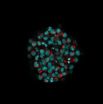(Press-News.org) After scoring a Supreme Court victory this spring, the Environmental Protection Agency can move forward with its strategy to cut air pollution from coal-fired power plants in several states — and new research suggests the impact could be lifesaving. Scientists assessed the effects of one state's prescient restrictions on plant emissions in a report in the ACS journal Environmental Science & Technology. They estimated that the state's legislation prevented about 1,700 premature deaths in 2012.
Jacqueline MacDonald Gibson and Ya-Ru Li explain that the U.S. has been working for years to lower levels of particulate matter, a form of air pollution that can cause serious health problems when people breathe it in. Certain kinds of particulate matter form mainly from power plant emissions. More than 10 years ago, correctly anticipating the federal government would eventually set tighter restrictions on power plants, North Carolina had approved more stringent goals than neighboring states. It required 14 major coal-fired plants within its borders to reduce emissions of nitrogen oxides and sulfur dioxides by 60 percent and 72 percent, respectively, over a 10-year period. Gibson's team wanted to see what effect the measures were having.
They found that the policy had successfully reduced emissions in North Carolina more than other southeastern states. Sulfur dioxide levels, for example, dropped an average of 20 percent a year from 2002 to 2012. Across all southeastern states, they dropped 13.6 percent per year. As a result of the improved air in North Carolina, the scientists used a health impact model to estimate that about 1,700 lives were saved in 2012 alone.
INFORMATION:
The American Chemical Society is a nonprofit organization chartered by the U.S. Congress. With more than 161,000 members, ACS is the world's largest scientific society and a global leader in providing access to chemistry-related research through its multiple databases, peer-reviewed journals and scientific conferences. Its main offices are in Washington, D.C., and Columbus, Ohio.
To automatically receive news releases from the American Chemical Society, contact newsroom@acs.org.
Follow us: Twitter Facebook END
Lowering coal-fired power plant emissions may have saved 1,700 lives in 1 year
2014-09-03
ELSE PRESS RELEASES FROM THIS DATE:
'Drink responsibly' messages in alcohol ads promote products, not public health
2014-09-03
Alcohol industry magazine ads reminding consumers to "drink responsibly" or "enjoy in moderation" fail to convey basic public health information, according to a new study from the Johns Hopkins Bloomberg School of Public Health.
A report on the research, published in the September issue of Drug and Alcohol Dependence, analyzed all alcohol ads that appeared in U.S. magazines from 2008 to 2010 to determine whether messages about responsibility define responsible drinking or provide clear warnings about the risks associated with alcohol consumption.
According to the study, ...
Live from inside a battery
2014-09-03
Mobile phones, digital cameras, camcorders, notebooks: They all run on lithium-ion batteries. These are characterized by high energy densities while remaining small and light enough to be used in portable devices. "A lithium-ion battery can store three to four times the energy of a comparably sized nickel-cadmium battery," explains Dr. habil. Ralph Gilles, scientist at the Neutron Source Heinz Maier-Leibnitz (FRM II). Even temperature fluctuations and longer-term storage do not pose problems for lithium-ion batteries.
These advantages make lithium-ion batteries a key ...
Rising risk of failed seasons as climate change puts pressure on Africa's farmers
2014-09-03
ADDIS ABABA, Ethiopia (2 September 2014)—Small-scale family farmers across Africa— already struggling to adapt to rapidly rising temperatures and more erratic rains—risk being overwhelmed by the pace and severity of climate change, according to the 2014 African Agriculture Status Report (AASR).The analysis, prepared by the Alliance for a Green Revolution in Africa (AGRA), with contributions from several African scholars, provides the most comprehensive review to date of how climate change will affect Africa's smallholder farmers and highlights the most promising paths to ...
Why HIV patients develop dementia
2014-09-03
Since the introduction of the combination anti-retroviral therapy (cART) in the mid-90s, the life expectancy of HIV patients has significantly improved. As a result, long-term complications are becoming more relevant: almost every second HIV patient is affected by neurocognitive disorders, which can lead to dementia. It has not as yet been fully understood how these disorders occur. Researchers from Bochum have now successfully demonstrated that infected cells activate specific immune cells in a patient's brain, which subsequently display harmful behaviour and lead to the ...
A fix to our cell-phone waste problem?
2014-09-03
When it comes to cell phones, the world is stunningly wasteful. Customers will buy more than 1.8 billion new ones by the end of this year only to abandon almost half of them to drawers, and they'll recycle a mere 3 percent of them. But creative and enterprising efforts are underway to reverse the seemingly unstoppable tide, says an article in Chemical & Engineering News (C&EN), the weekly news magazine of the American Chemical Society.
Alex Scott, a senior editor at C&EN, notes that there is much to be recovered and re-used from a cell phone. An average mobile contains ...
CNIO experts discover the genomic origin of telomere protectors
2014-09-03
RNA is one of the most primitive molecules associated with life that has awakened most interest over the last decade; a sister molecule to cellular DNA from which it originates via a process called transcription. Seven years ago, the groups of María Blasco at the Spanish National Cancer Research Centre (CNIO), Spain, and Joachim Lingner in Switzerland discovered that the DNA regions that contained telomeres, despite their compact and hard-to-access structure, generated RNAs that they christened TelRNAs or TERRA.
Now, a study published in the journal Nature Communications, ...
Breakthrough for carbon nanotube solar cells
2014-09-03
Lighter, more flexible, and cheaper than conventional solar-cell materials, carbon nanotubes (CNTs) have long shown promise for photovoltaics. But research stalled when CNTs proved to be inefficient, converting far less sunlight into power than other methods.
Now a research team led by Mark Hersam, professor of materials science and engineering and the Bette and Neison Harris Chair of Teaching Excellence at Northwestern University's McCormick School of Engineering, has created a new type of CNT solar cell that is twice as efficient as its predecessors. It is also the ...
Ethanol fireplaces: The underestimated risk
2014-09-03
Go to the DIY-market in the morning, buy the fireplace, and that evening, enjoy the cozy warmth and homey atmosphere of your new ornamental hearth. The suppliers of ethanol fireplaces are doing a brisk business with the lightweight, easy-to-install ornamental stoves with no chimney. However, caution is warranted when operating these fireplaces, because ethanol is a fuel that, together with the air, forms a highly combustible atmospheric mixture. If ethanol runs out when filling the combustion chambers and it ignites, then the entire room could go up in flames.
On top ...
Fingerprints for freight items
2014-09-03
Thousands of freight items are shipped by plane every day, around seventy percent of them in airliners. Stringent controls are supposed to prevent hazardous substances such as explosives from being smuggled on board. Screening procedures, such as x-ray scanning of freight, are time consuming and costly and have to be repeated in the event of suspicious circumstances. Easily verifiable features that verify that a freight item is "secure" have been lacking until now.
Researchers at the Fraunhofer Institute for Factory Operation and Automation IFF in Magdeburg are working ...
A 'clear' choice for clearing 3-D cell cultures
2014-09-03
VIDEO:
Using a confocal microscope, researchers can study a cleared spherical 3-D tissue culture at any depth. The video begins on the near surface and exits on the far side of...
Click here for more information.
PROVIDENCE, R.I. [Brown University] — Because Brown University biomedical engineering graduate student Molly Boutin needed to study how neural tissues grow from stem cells, she wanted to grow not just a cell culture, but a sphere-shaped one. Cells grow and interact ...


